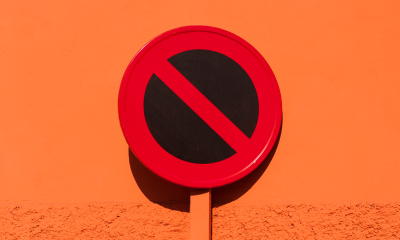Finance
Lyft adds bike lane maps in big safety upgrade for bikes and scooters


If you’ve ever rented a bike or scooter on the Lyft app, you’ve probably encountered this conundrum: after unlocking the vehicle, it takes another app, like Google Maps, to then find an appropriate route.
No longer.
The company announced Thursday that bike lanes would now be displayed inside its own app as well those of the 9 rental services it operates, like CitiBike, Capital Bikeshare, Divvy, and more.
It’s only on iPhone for now, but Android is in the works, Lyft said. For now, the bike lanes will only show in places where bikes and scooters have been added to the core Lyft app, that’s most everywhere except Boston and Portland.
Lyft hopes that by showing all transportation options, riders might opt for a green bike or scooter ride over a gas-powered car for their trip.
“We believe that providing clear information about bike lanes in our app will encourage more people to choose two-wheeled transportation for their trip,” Caroline Samponaro, Lyft’s head of bike and scooter policy, said in a press release. “Each ride on a bike or scooter represents a win for the environment, congestion, and a more livable city — and that’s what Lyft is all about.”
Earlier this year, Lyft launched a small pilot program on one San Francisco street that automatically directed drivers to safe pickup and dropoff spots that were out of the bike lane and didn’t impede traffic. The company says news on the pilot’s expansion is coming soon.
Bikes, meanwhile, continue to show massive growth for Lyft. The company declined to disclose any ridership numbers to investors in quarterly earnings reports, but said last week that CitiBike in New York set a daily record of 92,341 rides. That system, the largest in Lyft’s fleet, is set to grow over the next two years through its third and final expansion phase.
But that growth hasn’t been without struggles, as the entire industry is learning.
Lyft pulled its electric bikes from New York, Washington DC, and San Francisco earlier this year after a brake malfunction sent some riders over the handlebars. When a rebranded version of the pedal-assist bike relaunched in San Francisco, fires forced the bikes offline once again.
Uber, which was using the same bikes at the time, said it was able to fix the brake problem, and its bikes are still active in many markets. However, the company has recently raised prices in some locations and pulled the bikes from others, including San Diego, Atlanta, Dallas, San Antonio, Staten Island, and Providence. Scooters will remain in some markets, and the company hopes to have bikes on the roads again in Providence this fall, it said.
Lyft officials have declined to comment on its expansion plans for bikes and scooters, but told analysts in August that more investment was on the way.
“Collectively, we expect our bike and scooter investments to keep Lyft top of mind and increase both active riders and revenue per active rider,” CEO Logan Green said on the conference call. “In the long term, we are confident bikes and scooters will contribute to our bottom line.”
-

 Business7 days ago
Business7 days agoFormer top SpaceX exec Tom Ochinero sets up new VC firm, filings reveal
-

 Business6 days ago
Business6 days agoConsumer Financial Protection Bureau fines BloomTech for false claims
-

 Business4 days ago
Business4 days agoLangdock raises $3M with General Catalyst to help businesses avoid vendor lock-in with LLMs
-

 Entertainment4 days ago
Entertainment4 days agoWhat Robert Durst did: Everything to know ahead of ‘The Jinx: Part 2’
-

 Business6 days ago
Business6 days agoKlarna credit card launches in the US as Swedish fintech grows its market presence
-

 Entertainment3 days ago
Entertainment3 days agoThis nova is on the verge of exploding. You could see it any day now.
-

 Entertainment7 days ago
Entertainment7 days agoHow to watch ‘The Sympathizer’: Release date and streaming deals
-

 Entertainment6 days ago
Entertainment6 days agoHow to set boundaries in the early stages of dating






















